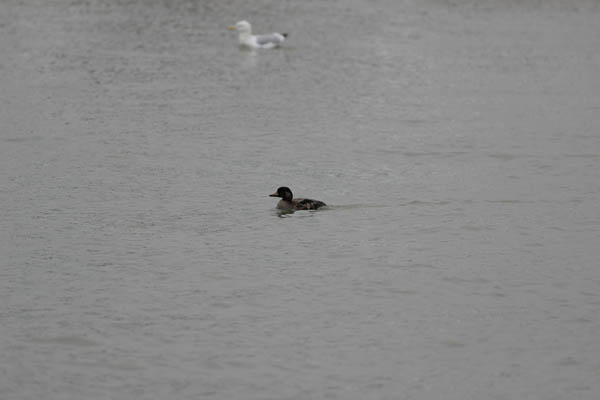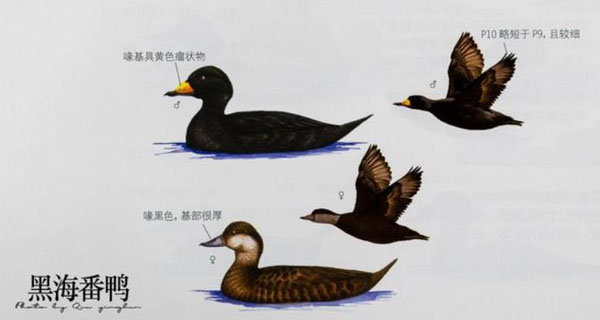Melanitta nigra
IUCN
LCBasic Information
Scientific classification
- name:Melanitta nigra
- Scientific Name:American black duck,Melanitta nigra,Black Scoter,Common Scoter
- Outline:Waterfowl
- Family:Anseriformes Anatidae Scutellaria
Vital signs
- length:44-54cm
- Weight:1300-1500g
- lifetime:16years
Feature
It is a short, fat, dark-colored sea duck with a large yellow tumor at the base of its beak.
Distribution and Habitat
In China, they winter along the eastern and southeastern coasts, and stray birds are seen in Beijing and Chongqing. Abroad, they breed from eastern Siberia to Alaska and northeastern North America, and winter along the west coast of North America and the northeastern and northwest coasts of the Pacific Ocean.
During the breeding season, the Black Sea Muscovy Duck inhabits freshwater lakes, ponds and rivers in the Arctic tundra and subarctic open areas. During the non-breeding season, they mainly inhabit saltwater waters such as coastal seas, bays and estuaries, and occasionally go to inland lakes, especially during migration.
Appearance
A stout sea duck, the male is black with a yellow tumor at the base of the beak. The female is dark brown with a smoky gray lower cheek to front neck. The iris is dark brown, the beak is gray brown, and the feet are gray brown.
Details
The Black Sea Muscovy Duck likes to gather in groups, and almost always moves in groups throughout the year. Sometimes males and females gather separately. Female birds usually winter further north. They often live on the water surface near the coast and islands, and are sometimes seen in inland freshwater lakes. They usually gather together and swim freely in groups, and occasionally they are seen alone or in pairs. They swim fast and lightly, and their tails are often raised. They are also very good at diving, and can stay underwater for more than 30 seconds each time. But they have difficulty walking on the ground, and they sway and look very clumsy. They are also very flexible when taking off from the water, and can fly without flapping too much on the water surface. They fly fast and powerfully, usually not high, and often fly close to the water surface.

In spring, they start to migrate to the breeding grounds from April to May. During the migration, female birds and young birds continue to join. There are also young birds that do not participate in breeding and do not migrate, but stay in the wintering grounds. In autumn, they migrate to the wintering grounds from September to October. They often migrate in groups. They fly very powerfully, flapping their wings quickly, often making a "whoosh" sound. They usually migrate along the coast. Sometimes they also fly over a considerable distance of land. They generally do not fly high when flying along the water, but fly very high when flying over land. Sometimes they also make a short stop in inland lakes along the way. The flying formation is often a tight group or a wavy line.

The Black Sea Duck mainly forages by diving. The food mainly consists of animal food such as aquatic insects, crustaceans, and mollusks. It also eats plant food such as the roots and leaves of Potamogeton and other aquatic plants.

The Black Sea Duck is usually sexually mature at the age of 2. It is already in pairs when it arrives at the breeding grounds. Pairs are usually formed during migration in late winter and spring. It nests in the Arctic and subarctic tundra and tundra forest belts. The nest is usually placed in grass or bushes on the ground not far from freshwater bodies such as lakes, ponds, and rivers, especially in tundra and islands with many lakes and ponds. The nest is made of some dry plants available on the spot, and is surrounded by down feathers plucked from the female bird. Each nest lays 6-10 eggs, which are light green-brown or light yellow in color. The egg size is 59-72×40-46.5 mm and weighs 60-74 grams. The female bird incubates the eggs alone. After the female bird begins incubating the eggs, the male birds fly to the sea or the waters near the nest in groups to molt. The incubation period is 27-28 days.








